MonoTools 2 for VisualStudio has been released
We just released Mono Tools for Visual Studio.
There are four main features in MonoTools 2:
- Soft debugger support.
- Faster transfer of your program to the deployment system.
- Support for Visual Studio 2010 in addition to 2008.
- Polish, polish and more polish.

Thanks to everyone that participated on our beta program for all of the bug reports and feedback!
MonoTools is the foundation on which we are building the upcoming Mono for Android toolchain.
New Long-Term Maintenance Mono Release
With the introduction of MonoTools for Visual Studio, we are also moving our long-term maintenance Mono release from the Mono 2.4 release to Mono 2.6, the release that we announced last week.
Getting Started
Download our betas from this page. On Windows, you would install our plugin for either 2008 or 2010 and you need to install Mono 2.6.5 on the target platform (Windows, Linux or MacOS).
On Linux, run `monotools-gui-server' or `monotools-server', this will let Visual Studio connect to your machine. Then proceed from Windows.
On MacOS, double click on the "MonoTools Server" application.
Once you run those, MonoTools will automatically show you the servers on your network that you can deploy to or debug:
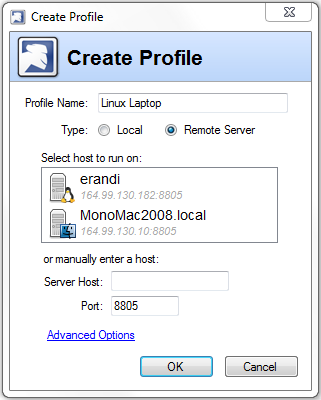
ASP.NET debugging with this is a joy!
Soft Debugger
This release is the first one that uses our new soft debugger. With is a more portable engine to debug that will allow our users to debug targets other than Linux/x86 for example OSX and Windows.
This is the engine that we use on MonoTouch and that we are using for Mono on Android.
Our previous debugger, a hard debugger, worked on Linux/x86 systems but was very hard to port to new platforms and to other operating systems. With our new soft debugger we can debug Mono applications running on Windows, helping developers test before moving to Linux.
Faster Transfers
When you are developing large applications or web applications, you want your turn around time from the time that you run hit Run to the site running on Linux to be as short as possible.
Cheap Shot Alert: When dealing with large web sites, we used to behave like J2EE: click run and wait for a month for your app to be loaded into the application server.
This is no longer the case. Deployments that used to take 30 seconds now take 2 seconds.
Support for Visual Studio 2010
Our plugin now supports the Visual Studio 2010 new features for plugin developers.
This means you get a single .vsix package to install, no system installs, no registry messing around, no dedicated installers, none of that.
The full plugin installs in 3 seconds. And you can remove it just as easily.
Then you can just from VS's Mono menu pick "Run In Mono" and pick whether you want to run locally or remotely.
We now also support multiple profiles, so you can debug from Visual Studio your code running on Linux boxes, Mac boxes or your local system.
Polish and more Polish
MonoTools was our first Windows software and we learned a lot about what Windows developers expected.
We polished hundreds of small usability problems that the community reported in our last few iterations. You can also check our release notes for the meaty details.
Appliances
And we integrate directly with SuseStudio to create your ready-to-run appliances directly from Visual Studio.
Posted on 03 Aug 2010
Mono has migrated to GitHub
We have now migrated all of Mono's source code from the Subversion at our Cambridge office over to GitHub.
We are going to be maintaining a migration FAQ and providing help to developers on irc.gnome.org channel #mono for the new setup.
The web site has not been updated yet and we still reference Subversion urls, but this will be fixed in the next few days.
Posted on 22 Jul 2010
Mono 2.8 Trick: tracing exceptions
Mono has an strace-like feature built into the runtime. This is useful to see which methods are being called by your application, just invoke Mono with --trace.
Our upcoming version has a neat new feature, when you use --trace=E:ExceptionName or --trace=E:all you get a stack trace of where the exception was thrown from:
$ gmcs.exe mono$ gmcs missing.cs error CS2001: Source file `missing.cs' could not be found Compilation failed: 1 error(s), 0 warnings
And now with tracing enabled, we do it setting the MONO_ENV_OPTIONS variable:
mono$ MONO_ENV_OPTIONS=--trace=E:all gmcs missing.cs[0xb75136f0:] EXCEPTION handling: System.IO.FileNotFoundException: Could not find file "missing.cs".
"{unnamed thread}" tid=0x0xb75136f0 this=0x0x53f18 thread handle 0x403 state : not waiting owns ()
at System.IO.FileStream..ctor (string,System.IO.FileMode,System.IO.FileAccess,System.IO.FileShare,int,bool,System.IO.FileOptions) {0x00619}
at System.IO.FileStream..ctor (string,System.IO.FileMode,System.IO.FileAccess,System.IO.FileShare) {0x00022}
at (wrapper remoting-invoke-with-check) System.IO.FileStream..ctor (string,System.IO.FileMode,System.IO.FileAccess,System.IO.FileShare) {0x0004f}
at System.IO.File.OpenRead (string) {0x0002c}
at Mono.CSharp.Driver.Parse (Mono.CSharp.CompilationUnit) {0x00016}
at Mono.CSharp.Driver.Parse () {0x00068}
at Mono.CSharp.Driver.Compile () {0x00098}
at Mono.CSharp.Driver.Main (string[]) {0x000a2}
at (wrapper runtime-invoke) {Module}.runtime_invoke_int_object (object,intptr,intptr,intptr) {0x00033}
error CS2001: Source file `missing.cs' could not be found
Compilation failed: 1 error(s), 0 warnings
Posted on 21 Jul 2010
Banshee Ships with Amazon Store Support
Aaron just shipped Banshee 1.7.3 which lets you purchase MP3s from Amazon from the player directly.
Get it fresh!
Posted on 21 Jul 2010
Building apps for the Retina Display
While adding Retina Display support to TweetStation I learned a couple of tricks that I figured would help other developers.
iOS 4 Points
Apple's Retina Display conveniently doubles the number of pixels on each dimension, the previous iPhone display had 320x480 pixels while the new new phone has 640x960 pixels.
To make existing applications run out of the box on these new displays Apple changed the units on the display and instead of using pixels they now use points. They are not really typographical points, but iOS "points". Both the old iPhones and the new iPhone have a resolution of 320x480 points.
This means that existing code that absolutely positioned views on the screen will get the views laid out in the same positions regardless of the device that the code is running on.
In UIKit points are interpreted based on the value of the UIView.ContentScaleFactor. If the value is 1.0 each point is mapped to one pixel. If the value is set to 2.0 each point is mapped to four pixels (2x on each dimension).
UIKit layout and CoreGraphics rendering primitives will automatically take this factor into account and position and render accordingly.
Images
The Image loading routines have been extended to load higher-resolution images by default when you use UIImage.FromBundle. On Retina Displays the code will probe for a [email protected] filename when you request file.ext to be loaded. For example this loads the background texture you use:
texture = UIImage.FromBundle ("Images/texture.png");
TweetStation's images are here.
Bitmaps and Inkscape
All the icons and images on TweetStation were done using Inkscape. When I exported the icons they would invariably look blurry. For example, this is from my first attempt at getting the swipe menu on TweetStation working:

I would just draw my icons on Inkscape and then export them as bitmaps. Inkscape would then anti-alias the result, you can see how the reply icon is not rendered properly:
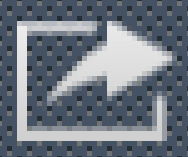
The Inkscape FAQ contains this bit of information that is very useful if you are drawing small icons:
With the current renderer, it is not possible to completely get rid of antialiasing. However, it is possible to partially suppress it on export. Usually, antialiasing is unwelcome in horizontal and vertical lines which become "blurred". To work around this, make sure your horizontal/vertical edges are snapped on the pixel grid, and all strokes are a whole number of pixels wide. Then, export bitmap at the default 90dpi so that 1 px unit corresponds to 1 bitmap pixel. In the resulting bitmap, snapped color boundaries will be perfectly crisp.
These are the settings that I use now to export the same graphic:
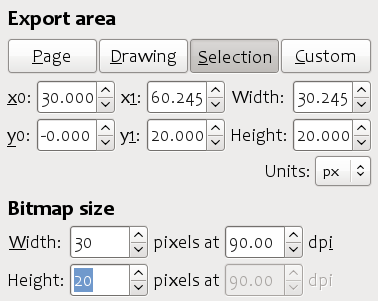
I used guidelines on Inkscape to help me:
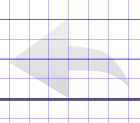
This is the new version of the icon before it gets composited with the background
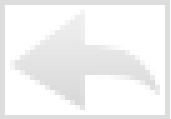
To export the same image at high resolution, set the DPI in the dialog box to 180. Inkscape will automatically change the width and height for you.
The other problem that I had was related to my centering code, this is what the rewteet icon looks like from the menu above:

The blurry sides of the retweet icon were caused by the math code setting the X position of the image at a fraction of a point (0.5).
After fixing both problems and adding a nice backdrop shadow, this is what the menu looks like:

Graphics Context
Loading images with more pixels for the background texture and the icons wont do you any good if you are drawing the images yourself.
When you create a graphics context using the pre-iOS 4 APIs you will end up with a context that assumes that you are not aware of the Retina Display and hence will rescale your drawing up. When you create an image context of 100x100 points like this:
UIGraphics.BeginImageContext (new SizeF (100, 100));
You will end up with a context that has 200x200 points, but will automatically double all of your pen widths and will scale any images up. If you had a high-resolution image, it will first be scaled down when rendering to the context, then scaled up when rendering the data.
To take advantage of the retina display you need to call a new method:
UIGraphics.BeginImageContextWithOptions (SizeF size, bool opaque, float scale);
If you set scale to zero, it will pick 1.0 for old display and 2.0 for retina displays. I use this helper method to support both iOS 3.x and iOS 4.0:
void BeginImageContext (SizeF size)
{
if (Graphics.HighRes)
UIGraphics.BeginImageContextWithOptions (size, false, 0);
else
UIGraphics.BeginImageContext (size);
}
This is how the swipe menu is rendered at high resolution:

More
Apple's Supporting Resolution Independence document has more information.
Posted on 20 Jul 2010
Mono's Git Migration
Mono's source code is being migrated to GitHub on July 22nd, starting at 9am Boston time.
We are psyched that Github was kind enough to host Mono's large repositories for free on their system. We are also taking advantage of their new Organizations functionality.
Gonzalo posted the following details about the migration:
We are moving our source code repository to GitHub. On July 22nd ~9am EDT (1300 GMT) the subversion repository at "svn +ssh://mono-cvs.ximian.com/source" will be set to read-only mode and kept that way forever. We estimate that the process of migrating all the projects and moving them to GitHub will take more than 3 and less than 8 hours. Once it is completed we will send an email to this list with URLs to the new repositories, FAQs,...
If you have any questions about the migration, please ask them here and we will add them to our Git Migration FAQ.
Posted on 20 Jul 2010
Fresh Mono Baked
Andrew just announced Mono 2.6.7, the version that is replacing our long-term maintenance release of Mono with plenty of bug fixes as well as the following new features:
- Microsoft's ASP.NET MVC2 is now bundled with Mono.
- Upgraded xbuild tool (Mono's msbuild)
- Upgraded our LINQ to SQL (DbLinq)
- Upgraded our Soft Debugger
- We now publish CentOS/RHEL packages.
Our CentOS/RHEL packages install on /opt/novell/mono, just like our packages for SUSE Linux Enterprise and should not conflict with your own packages of Mono that you might have from some other sources.
Posted on 20 Jul 2010
Microsoft Licensing Changes for IronRuby and IronPython
If you check the latest versions of IronRubyIronPython or the Dynamic Language Runtime you will see that Microsoft has now relicensed the code from the Microsoft Permissive License to the Apache 2 License.
Posted on 17 Jul 2010
Spaniard Anger Towards Mexicans
It has been brought to my attention that the upcoming 200 year celebration of Mexico's independence from Spain on September 15th has lead to office unrest all across the country between teams that have both Mexicans and Spaniards working side-by-side.
Spain might have won the world cup, but Mexico upgraded from being a colony of Spain and being subject to the will of the Kings of Spain, to a democracy subject to the will of drug dealers.
To resolve this animosity, I propose we settle the score this September 15th with a cook-off between Spaniard food and Mexican food.
I propose the cook-off from the Novell/Cambridge team be held at my place the weekend before the festivities to settle the score before the celebrations take place. We will make delicious tacos. Gonzalo will be making a Paella.
Posted on 17 Jul 2010
New Mono Runtime Features
With Mono 2.8 we want to make it very easy for developers to use the LLVM powered Mono engine and the new Mono Garbage Collector.
Previously users had to build Mono from source code and choose as part of their build whether they wanted the Mono VM to be powered by LLVM or not and whether they wanted to use the Boehm GC or the new Generational GC. Typically users would have to keep multiple parallel Mono installations.
This is no longer necessary.
Mono 2.8 by default behaves just like any other Mono, by default you get the regular fast Mono JIT with the Boehm GC.
You can then pass the --llvm flag to instruct the Mono runtime to use LLVM for code generation (much slower to JIT, but produces better code for long-running applications or compute intensive applications).
To use the new garbage collector you pass the --gc=sgen command line argument.
New MONO_ENV_OPTIONS
We wanted users to try LLVM, SGen or the LLVM/Sgen combination without having to modify all of their launch scripts or existing tools so we introduced a new environment variable that Mono parses on startup, the MONO_ENV_OPTIONS variable.
Mono will parse the contents of the MONO_ENV_OPTIONS variable as if the arguments had been passed in the command line, so you could do a full bootstrap of Mono's class libraries with both by doing:
$ export MONO_ENV_OPTIONS="--llvm --gc=sgen" $ make
How to test LLVM and SGen
Update: Both the --gc=sgen and --llvm options depend on your architecture and operating system being supported by SGen and LLVM and depend on you compiling your runtime with these features.
SGen will be automatically enabled if your OS/architecture is supported when you run configure.
LLVM requires the installation of the LLVM libraries. We strongly recommend that you use our modified version of LLVM that has been extended to support various constructs required by .NET.
For more information on compiling LLVM and building your Mono with it, see our web page
Posted on 14 Jul 2010
« Newer entries | Older entries »
Blog Search
Archive
- 2024
Apr Jun - 2020
Mar Aug Sep - 2018
Jan Feb Apr May Dec - 2016
Jan Feb Jul Sep - 2014
Jan Apr May Jul Aug Sep Oct Nov Dec - 2012
Feb Mar Apr Aug Sep Oct Nov - 2010
Jan Feb Mar Apr May Jun Jul Aug Sep Oct Nov Dec - 2008
Jan Feb Mar Apr May Jun Jul Aug Sep Oct Nov Dec - 2006
Jan Feb Mar Apr May Jun Jul Aug Sep Oct Nov Dec - 2004
Jan Feb Mar Apr May Jun Jul Aug Sep Oct Nov Dec - 2002
Jan Feb Mar Apr May Jun Jul Aug Sep Oct Dec
- 2022
Apr - 2019
Mar Apr - 2017
Jan Nov Dec - 2015
Jan Jul Aug Sep Oct Dec - 2013
Feb Mar Apr Jun Aug Oct - 2011
Jan Feb Mar Apr May Jun Jul Aug Sep Oct Nov Dec - 2009
Jan Feb Mar Apr May Jun Jul Aug Sep Oct Nov Dec - 2007
Jan Feb Mar Apr May Jun Jul Aug Sep Oct Nov Dec - 2005
Jan Feb Mar Apr May Jun Jul Aug Sep Oct Nov Dec - 2003
Jan Feb Mar Apr Jun Jul Aug Sep Oct Nov Dec - 2001
Apr May Jun Jul Aug Sep Oct Nov Dec
